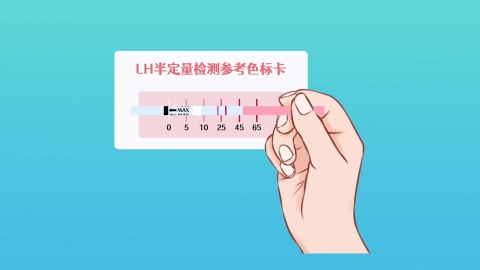What does it mean when an ovulation test strip changes from strongly positive to weak after four hours, and what should be done?
Under normal circumstances, a positive ovulation test turning negative within four hours may be caused by normal ovulation, improper testing technique, luteal phase deficiency, polycystic ovary syndrome (PCOS), or premature ovarian failure. It is recommended to seek medical advice promptly, identify the underlying cause, and follow a treatment plan under medical supervision, which may include general management and medication. Detailed explanations are as follows:

1. Normal ovulation: A strong positive indicates that luteinizing hormone (LH) has reached its peak. Ovulation typically occurs about 4 hours after the LH peak, followed by a rapid drop in hormone levels, causing the test line to become weaker. This may be accompanied by mild abdominal bloating or stretchy, egg-white-like cervical mucus. For those trying to conceive, this is an ideal time to have intercourse. Rest well, maintain a relaxed mindset, and no special treatment is needed.
2. Improper testing technique: Diluted urine, insufficient or excessive dipping time of the test strip can lead to inaccurate results, such as a false strong positive followed by a quick decline. Re-test using proper technique: collect urine between 10 a.m. and 8 p.m., dip the test strip into urine for exactly 3 seconds, then remove and read the result within the specified time frame.
3. Luteal phase deficiency: The LH peak is short-lived, and after ovulation, the corpus luteum produces insufficient hormones, causing the test to quickly turn negative. This may be associated with a shortened menstrual cycle. Follow your doctor’s instructions to take medications such as progesterone capsules, dydrogesterone tablets, or medroxyprogesterone acetate tablets to improve luteal function.
4. Polycystic ovary syndrome (PCOS): Hormonal imbalances cause abnormal LH elevation, resulting in a brief strong positive followed by a rapid decline, often accompanied by hirsutism and infrequent menstruation. Medications such as ethinylestradiol/cyproterone acetate, drospirenone/ethinyl estradiol, or spironolactone may be prescribed to regulate hormone levels.
5. Premature ovarian failure: Declining ovarian function leads to poor follicular development and significant fluctuations in LH levels, causing the test to rapidly change from strong positive to negative. Symptoms may include hot flashes and insomnia. Under medical guidance, take estrogen supplements such as estradiol valerate tablets, conjugated estrogens, or estradiol/dydrogesterone tablets to restore hormonal balance.
Maintain a regular sleep schedule, avoid staying up late, and reduce intake of high-sugar and high-fat foods. Engage in moderate exercise such as yoga or jogging to help regulate endocrine function. With scientific monitoring and proper self-care, reproductive health can be effectively supported.





